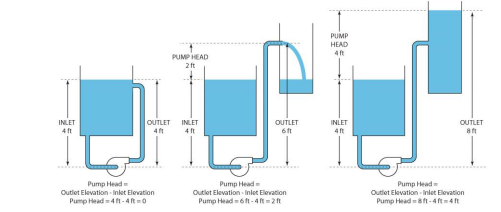Pump Selection Criteria
For sanitary processing, quick and efficient cleanability is critical when choosing a pump. To ensure a hygienically and microbiologically perfect condition of the final product, high standards are applied to centrifugal and PD pumps with regard
to hygiene and cleaning requirements. The surface finish influences the cleanability of pump parts. Cleaning times will decrease with improved surface finishes. Pumps for food, beverage or pharmaceutical industries are constructed of 316L stainless steel or alloys which provide a homogenous, pore-free surface. The product chamber should have no gaps or dead ends. Seal rings must be clamped in a way that they can be cleaned by the CIP solution. Non-metallic seals are typically made of NBR, EPDM, PTFE or FPM.1
The main purposes for creating sanitary design in pumps are to:
· make sanitation programs faster;
· make sanitation programs more efficient;
· make sanitation programs more economical;
· help prevent product adulteration;
· help satisfy regulatory requirements;
· help satisfy consumer/customer audits, demands and requirements.
Additionally, accrediting organizations, such as 3A, EHEDG, and the FDA, publish guidelines meant to specify the
technical requirements of pumps and other processing equipment. Full guidelines can be found on these organizations
websites.
Pump Specifications and Selection
Pumps are commonly rated by horsepower, capacity or flow rate (US gallons per minute), outlet pressure (defined as meters or feet of head), and inlet suction (defined as suction meters or feet of head). The head can be simplified as the number of feet or meters the pump can raise or lower a column of water at atmospheric pressure.
Total Suction Head
![]()
where:
hs = static suction head
> 0 for flooded section
< 0 for flooded section
hfs = pressure drop in suction line
ps > 0 for pressure
ps < 0 for vacuum
ps = 0 for open tank
NBR – nitrile rubber; copolymer of butadiene and acrylonitrile; EPDM – Ethylene propylene diene rubber; a terpolymer of ethylene,
propylene and a diene-component; FPM – fluorinated propylene monomer; commonly sold under the trade name Viton®; PTFE –
polytetrafluoroethylene elastomer; commonly sold under the trade name Teflon®
Total Discharge Head
![]()
where:
ht = static discharge head
hft = pressure drop in discharge line
pt > 0 for pressure
pt < 0 for vacuum
pt = 0 for open tank

Total Head
![]()
where:
Ht = total discharge head
Hs = total suction head
From an initial design point of view, engineers often use a quantity termed the specific speed to identify the most suitable pump type for a particular combination of flow rate and head. Therefore, to ensure you choose the right pump for the application, the following is a list of questions you will need to answer.
Material Properties
What is the material being pumped?
What is the material viscosity?
What is the material density or specific gravity?
What is the particle size?
What is the temperature of the material?
Is the material abrasive?
Process Conditions
What is the desired flow rate?
Where is the feed tank relative to the pump?
What is the suction lift distance?
What is the head pressure?
What is the discharge distance?
What is the inlet and outlet hose diameter?
Other Considerations
What certifications are required (FDA, 3-A, EHEDG)?
Will it be used for COP or CIP?
What is the desired price range?
What is the pressure of the shop air?
Who will clean and service the pump?
What special applications need to be considered?
With these questions and answers in hand, you can discuss the best pump choice with one of our engineers.
